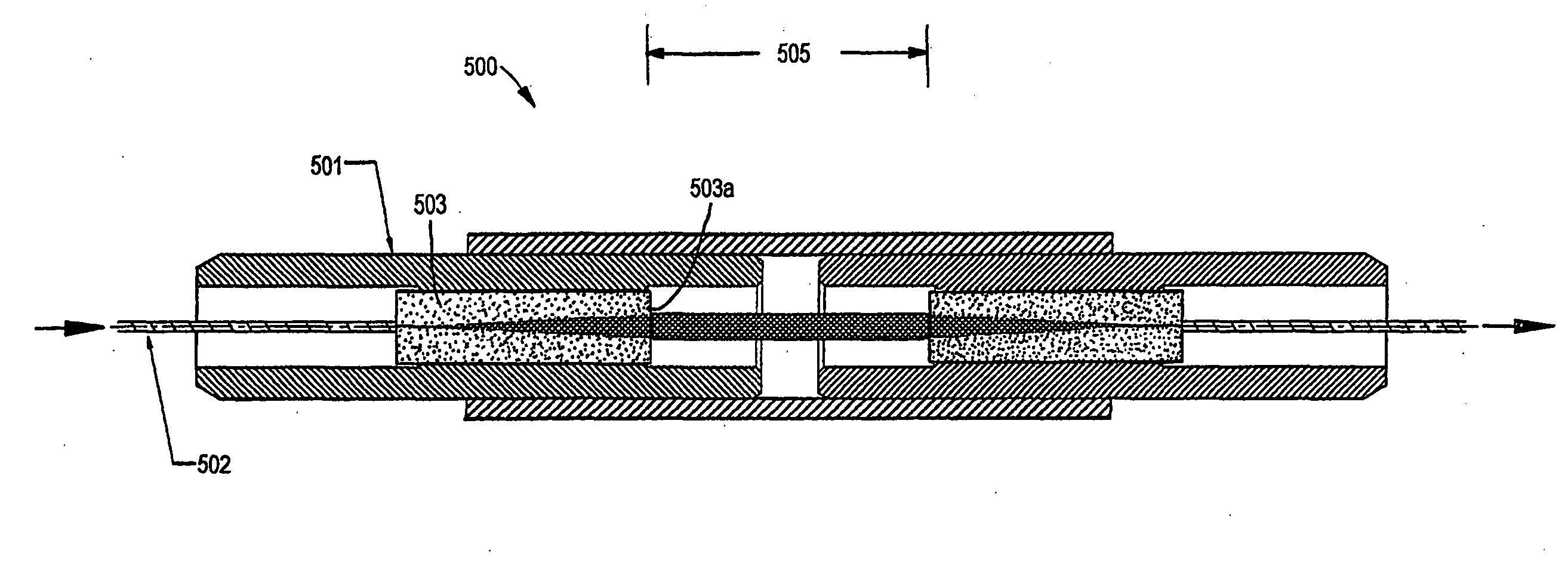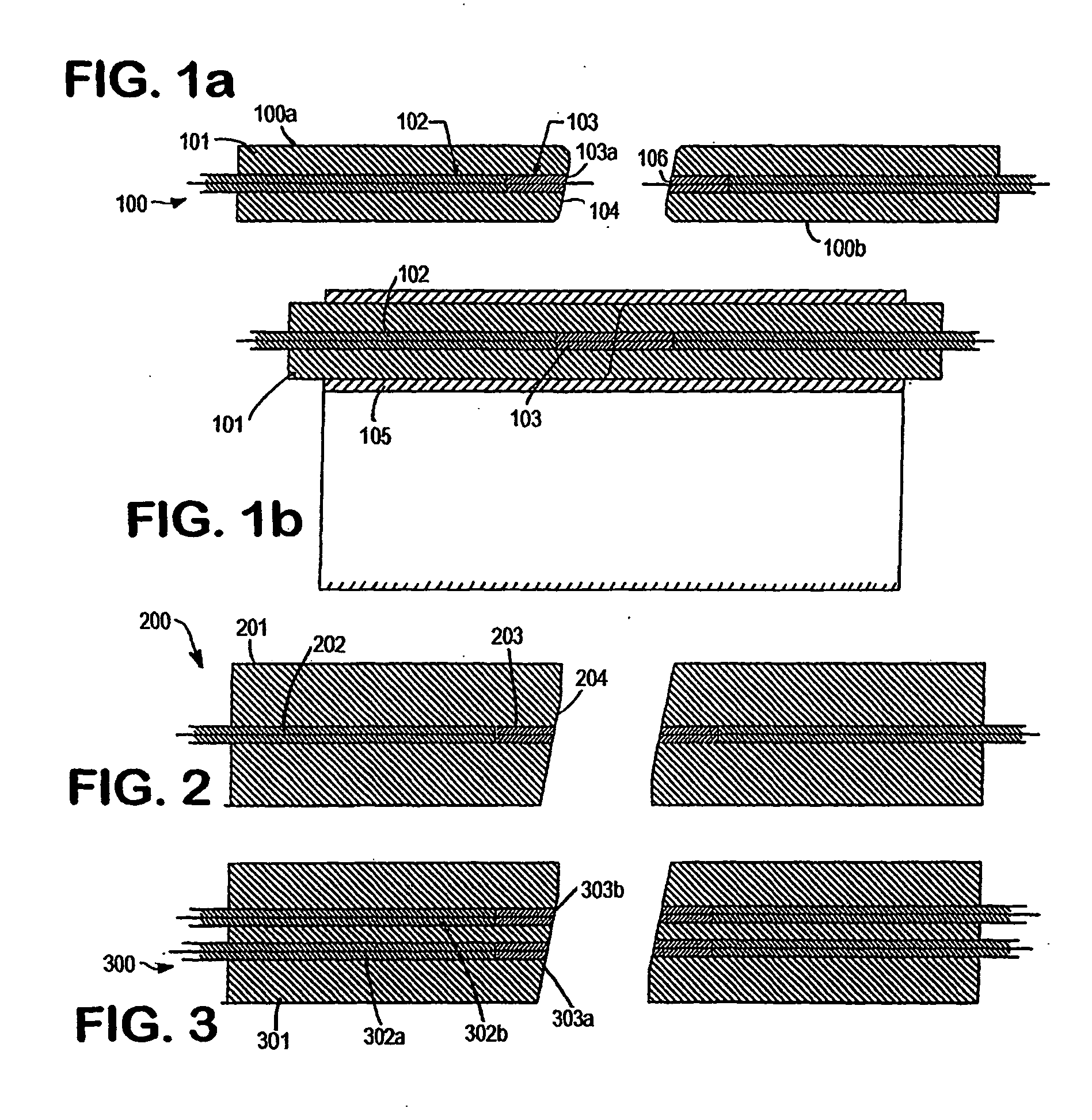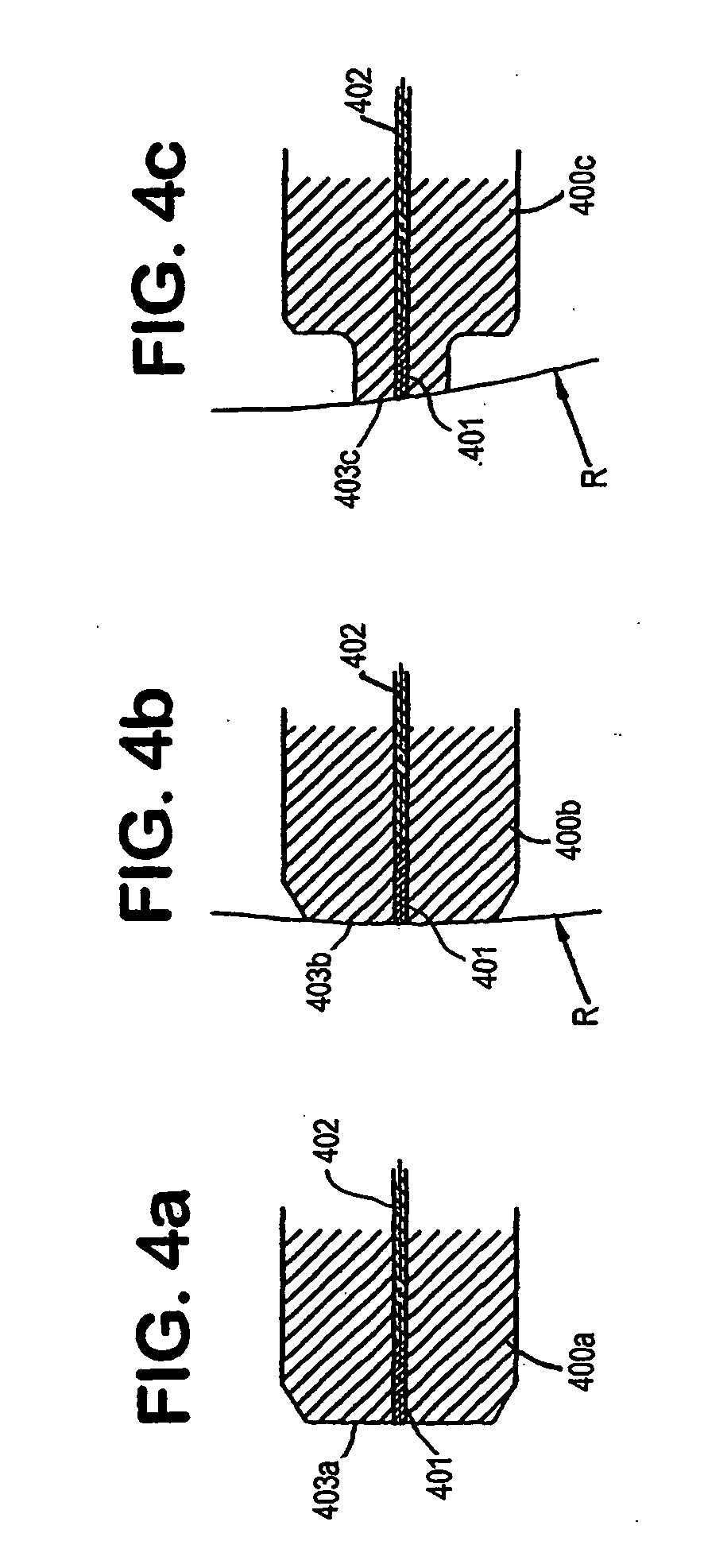Expanded beam connector system
a beam connector and beam beam technology, applied in optics, instruments, optical light guides, etc., can solve the problem of unacceptable back reflection level in telecom applications, and achieve the effect of reducing the negative effect of offs
- Summary
- Abstract
- Description
- Claims
- Application Information
AI Technical Summary
Benefits of technology
Problems solved by technology
Method used
Image
Examples
Embodiment Construction
[0057] The method of manufacturing the connectors of the present invention can vary. The following is an example of a preferred manufacturing approach for either an FC or SC style connector having the expanded beam of the present invention. It should be understood that this example is for illustrative purposes only and should not be used in any way to limit the scope of the invention.
[0058] Step 1. Receive Lens / Fiber Pigtail From Vendor
[0059] SMF-28 fiber with 900 um buffer,
[0060] length: 3 m
[0061] from tip of lens to beginning of buffer: 11 / 10.5 mm
[0062] lens length is 1 / 4 pitch plus 17-22 .mu.m for polishing
[0063] Step 2. Assembly
[0064] Connector sub-assembly parts:
[0065] Ferrule: SM-126 / 127 .mu.m bore (larger bore more readily accepts lens / fiber pigtail than SM-125 / 126 .mu.m bore ferrule)
[0066] Ferrule assembly: FC or SC
[0067] Spring: standard
[0068] Retainer body: standard
[0069] Epoxy: 353 ND, SM cure schedule
[0070] Alignment and cure fixture with "non-stick" physical stop
[0071] ...
PUM
 Login to View More
Login to View More Abstract
Description
Claims
Application Information
 Login to View More
Login to View More - R&D
- Intellectual Property
- Life Sciences
- Materials
- Tech Scout
- Unparalleled Data Quality
- Higher Quality Content
- 60% Fewer Hallucinations
Browse by: Latest US Patents, China's latest patents, Technical Efficacy Thesaurus, Application Domain, Technology Topic, Popular Technical Reports.
© 2025 PatSnap. All rights reserved.Legal|Privacy policy|Modern Slavery Act Transparency Statement|Sitemap|About US| Contact US: help@patsnap.com



